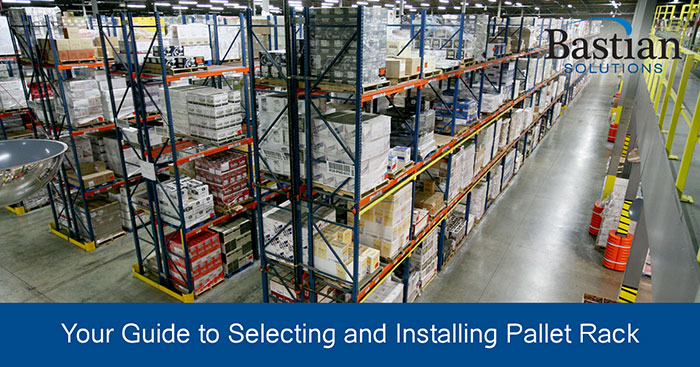
Your Pallet Racking Guide: Insider Tips on Selecting and Installing
Brandon Trammell | 08 March 2018
Pallet racking is a common storage solution in warehouses, distribution centers, and manufacturing facilities of any size. Although common, there are many options to consider, so it’s good to understand your objectives before jumping into the proposal process. Once you have decided to send your request for proposal (RFP) for a pallet storage solution, there are several steps our team will follow to find the best layout and product for your needs.
Let’s dive into what follows the submission of your pallet racking RFP.
Design Engineering & Proposal Phase
Besides coming up with different solutions, integrators will gather quotes from pallet rack vendors and installers as well as submit a proposal. After deciding on a racking manufacturer, the engineering team and selected manufacturer will work through several design iterations to ensure we provide you with exactly what is needed to meet your storage and operational goals. Below are some of the aspects our engineering team considers before designing a successful pallet racking solution.
Selective Pallet Rack
This is the most common racking style. Pallets rest on load beams, and the rack can be used with a variety of product sizes.
- Single Deep Selective Rack
- Pro: Direct access to each product
- Con: Limited storage capabilities
- Double Deep Selective Rack
- Pro: Increased storage capacity by as much as 10-15%
- Con: Lack of direct access to all pallet positions
- Roll-formed vs. Structural
- Selective rack can be purchased in either style but you’ll want to purchase the one that best fits your operation.
- Roll-formed: Less expensive but lighter load capacity; easy to install
- Structural: Higher load capacities but more expensive; typically less maintenance and lasts longer
Pallet Flow Rack
Utilizes First-In/First-Out (FIFO) system and is great for material with expiration dates, freezer storage and dense dynamic storage. The type of flow rack you choose is largely dependent on the pallet design and weight. (i.e. Do you use GMA, Chep, Peco or other pallet?)
- Pallet flow options:
- Flow rail
- Staggered flow wheel
- Single flow wheel
- 4 Deep Flow Rack
- Pro: Dense storage of like SKUs
- Con: Non-direct access to each product
Push-Back Pallet Racking
Utilizes Last-In/First-Out (LIFO) system and is great for a high volume of product and limited number of pallets per SKUs. Knowing the pallet type is important if using push-back racking to ensure correct placement of stops.
- Able to store 1-6 pallets deep
- Pros and cons are similar to pallet flow rack, but push back is a better fit if you use the LIFO system.
- Pro: Dense storage of like SKUs
- Con: Non-direct access to each product
- When working to design this type of racking system, cart load capacity and pallet stop locations are key.
Our team will assist you in selecting the right pallet rack for your operation and design the best layout. This ensures you improve your storage capacity and overall productivity. Once the design is agreed upon, we enter the project implementation phase.
Project Implementation
Once you are ready to install your new pallet racking system, there are several steps that should be reviewed with your integration team. The integrator should lead these efforts, so it’s good to hold the company accountable.
- Make sure that all parties understand the scope and time line of the project (i.e. load capacities, ship dates, updated layouts, number of bays, etc.)
- Firm up install dates and times; as we all know, sometimes schedules can change
- Review safety protocols and documents for the installation process
- All equipment should be on site at least 3-5 days in advance; integrator should do a QA check to make sure everything is there.
- Equipment should be staged as close to the installation area as possible
As a customer, being actively engaged in the solution and what is best is the quickest way to have a successful project. If you have questions or would like assistance with a project, please contact us.
Comments
No comments have been posted to this Blog Post
Leave a Reply
Your email address will not be published.
Comment
Thank you for your comment.